In an industry where precision, efficiency, and safety are paramount, autonomous LiDAR drones are transforming the landscape of surveying workflows in construction, underground cavity monitoring, industrial inspection, and geospatial mapping. By combining state-of-the-art sensors with advanced software algorithms, our drones can autonomously navigate complex environments and collect high-resolution data with precision.
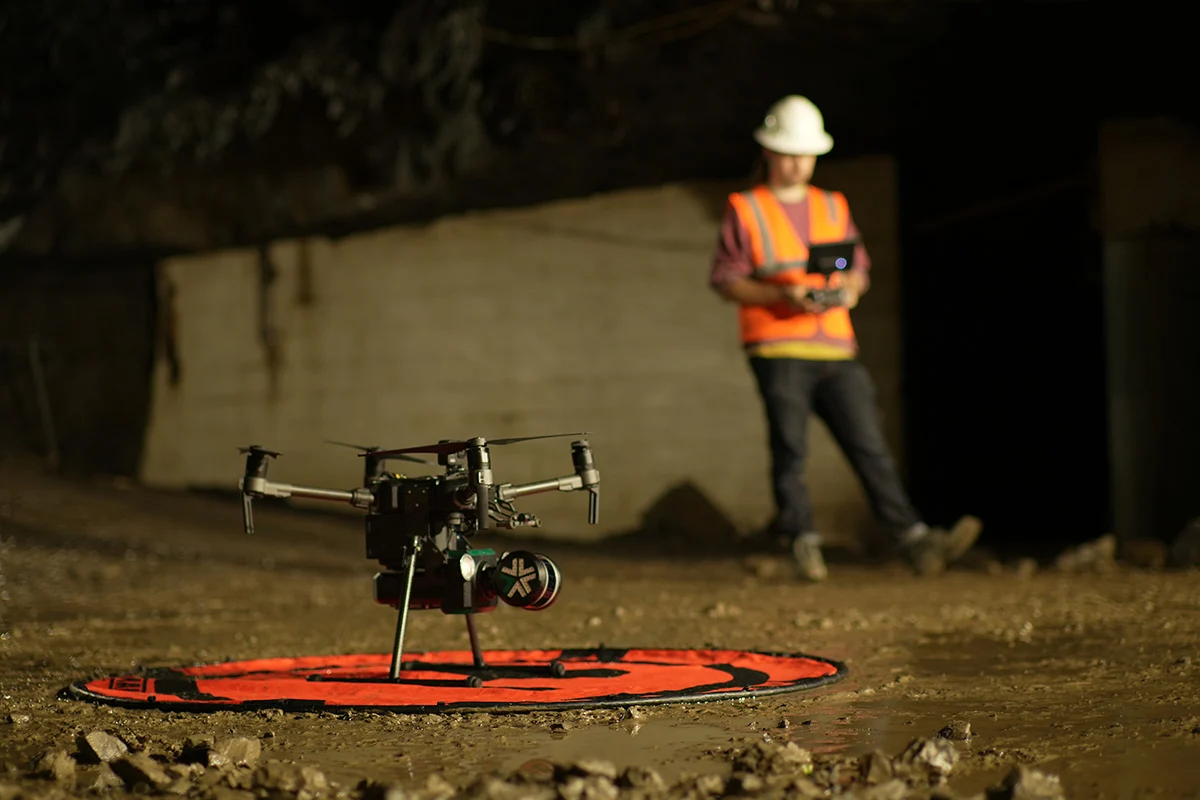
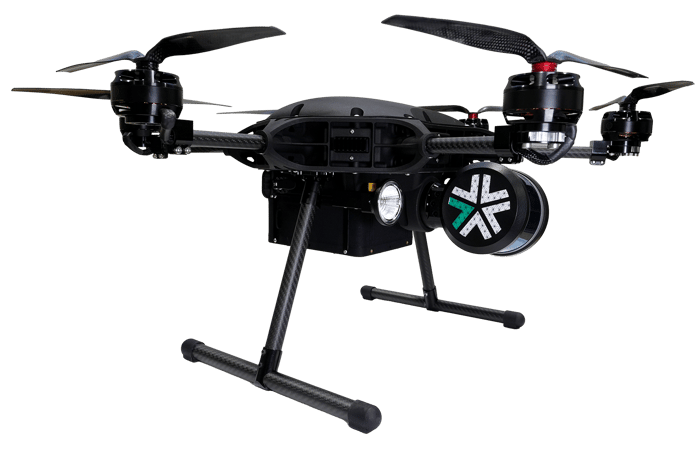
Autonomous LiDAR drones, equipped with Light Detection and Ranging (LiDAR) technology, are changing the game in data collection. Using advanced LiDAR-based SLAM (Simultaneous Localization and Mapping), these drones navigate autonomously, even in environments where GPS is unreliable. They create detailed point clouds, capturing data with unparalleled accuracy and detail.
Learn More about SLAM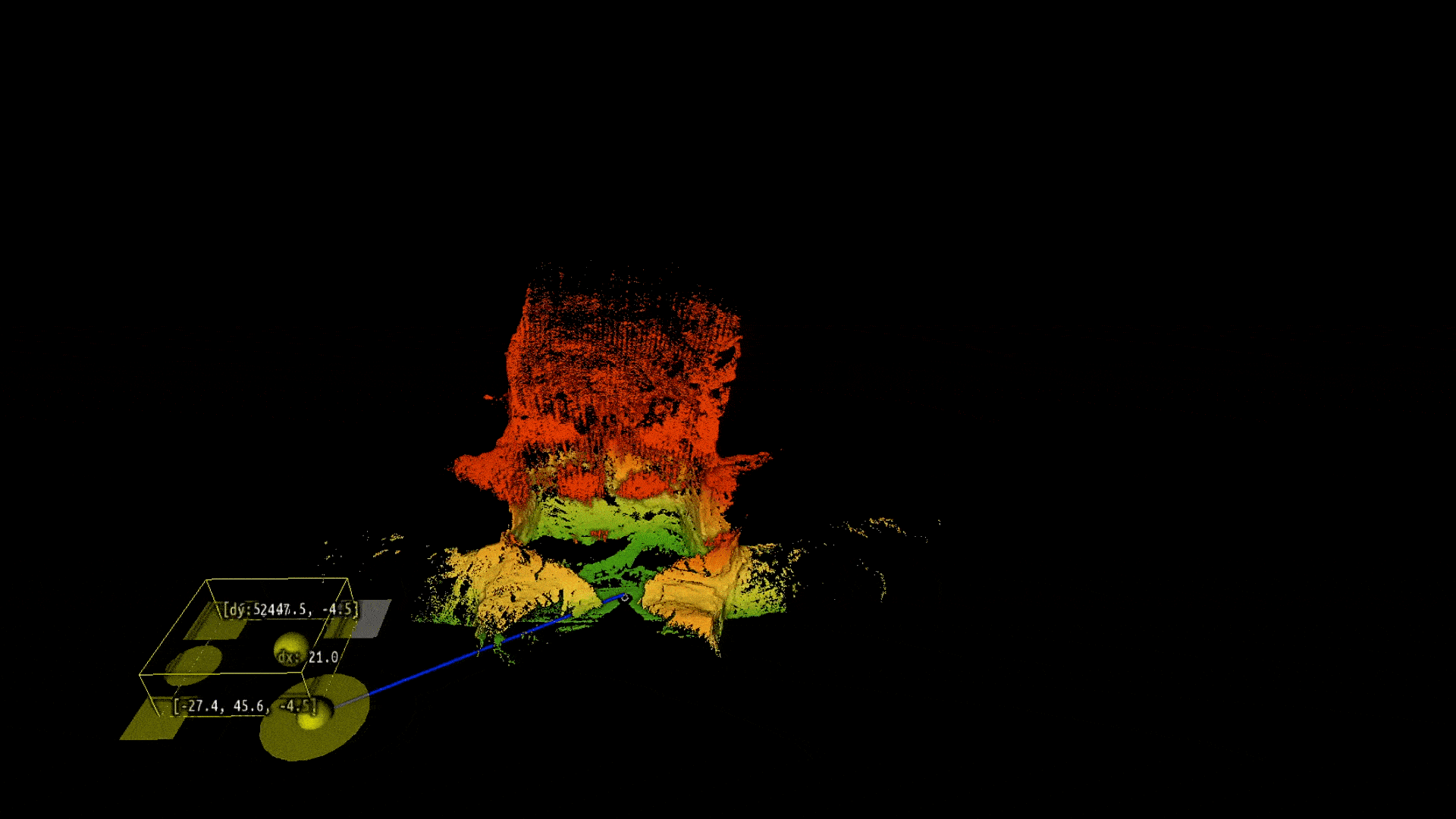
At Exyn Technologies, we're proud to offer AL4 - Autonomy Level 4 - the highest level of aerial autonomy currently available on all of our robots. This means our drones can navigate complex environments entirely autonomously, without any human pilot intervention. Operators simply have to define an area of interest and ExynAero chooses it's own waypoints to cover the entire scan in real time.
This is the algorithm at the heart of ExynAI which powers the autonomous ExynAero and portable ExynPak.
Learn More about Autonomy Level 4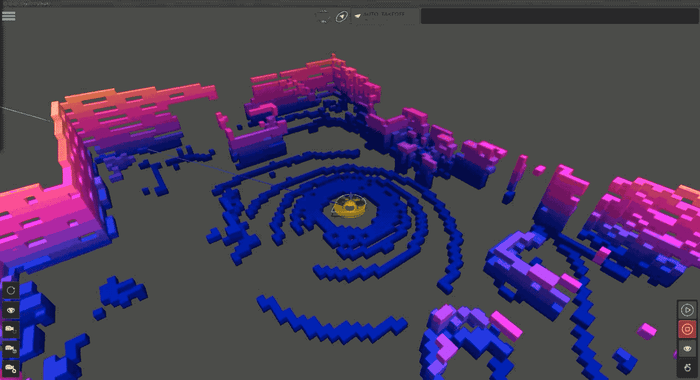
Simultaneous Localization And Mapping (SLAM) is a complex algorithm that allows a robot, such as an autonomous drone, to map an unknown environment while simultaneously tracking its position within it. It's particularly vital in navigating GPS-denied areas such as underground terrain.
SLAM 3D-mapping can use various sensors to visualize its surroundings, including LiDAR, ultrasonic sensors, and cameras. LiDAR-based SLAM uses a LiDAR (Light Detection and Ranging) sensor to “see” its environment. Here’s how that process works:
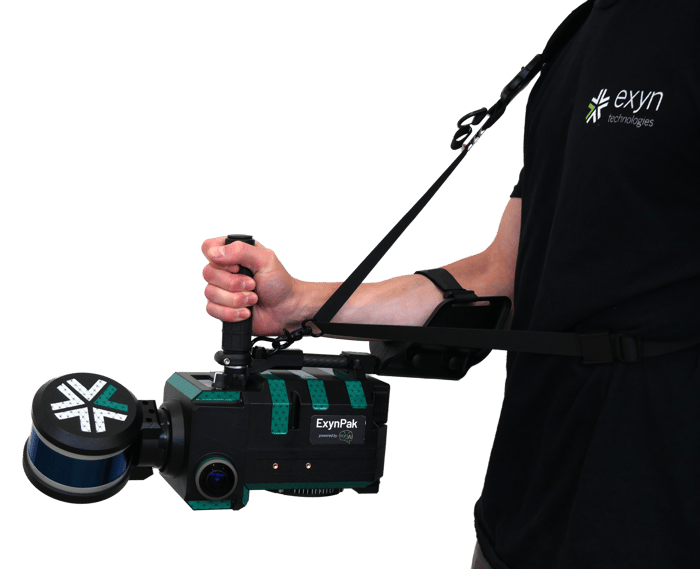
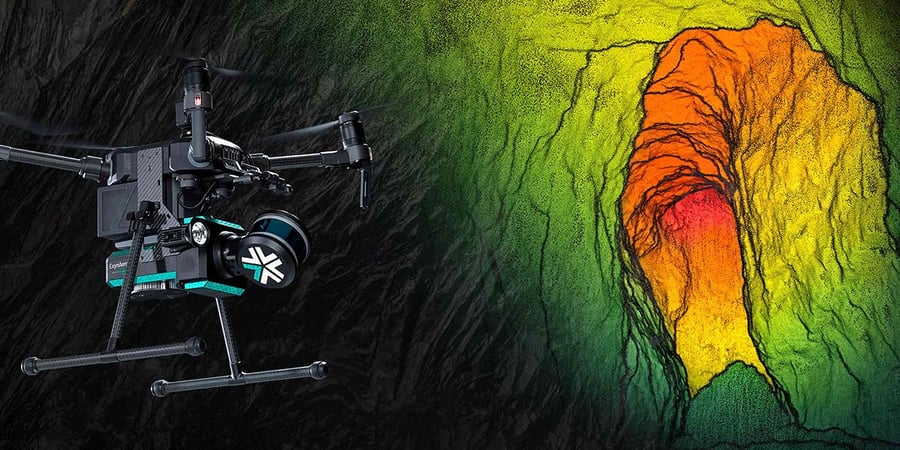
In the mining industry, autonomous LiDAR drones are revolutionizing the way underground and open-pit mines are surveyed and managed. They can safely map and model mine shafts, tunnels, working stopes, and open pits, providing valuable data for volume calculations, structural integrity assessments, and planning of mining operations. This technology significantly improves safety by reducing the need for human presence in potentially dangerous environments. You can read more in a whitepaper comparing an autonomous LiDAR drone to a traditional CMS method.

In construction, these drones can be used for site surveying and monitoring progress. They provide accurate and up-to-date 3D models of construction sites, which helps in efficient planning and detecting potential issues early. For infrastructure, they assist in the inspection and maintenance of bridges, buildings, and other structures, especially in hard-to-reach areas, ensuring structural integrity and safety.
Autonomous LiDAR drones are revolutionizing the field of construction and infrastructure inspection by offering a blend of safety, efficiency, and precision that was previously unattainable. These drones provide significant advantages over traditional surveying and inspection methods.
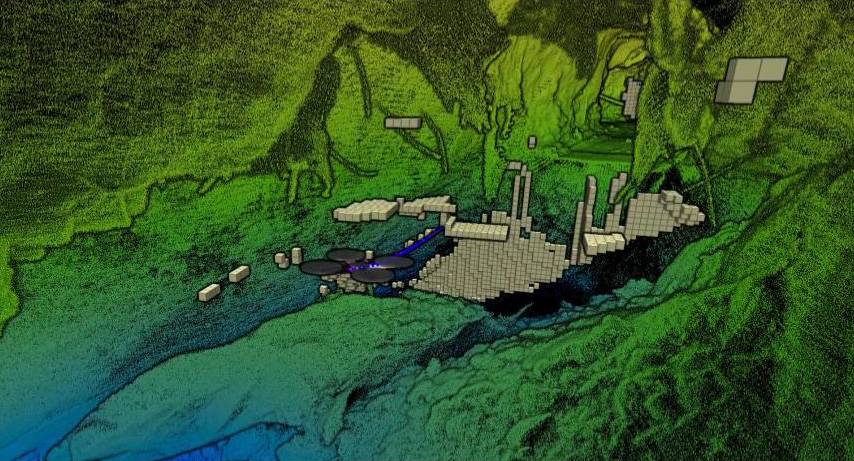
Autonomous LiDAR drones are increasingly becoming a vital asset in search and rescue (SAR) operations due to their ability to rapidly and safely survey large and often inaccessible areas. These drones offer a unique set of capabilities that can significantly enhance the efficiency and effectiveness of SAR missions. Here's how they are being utilized:
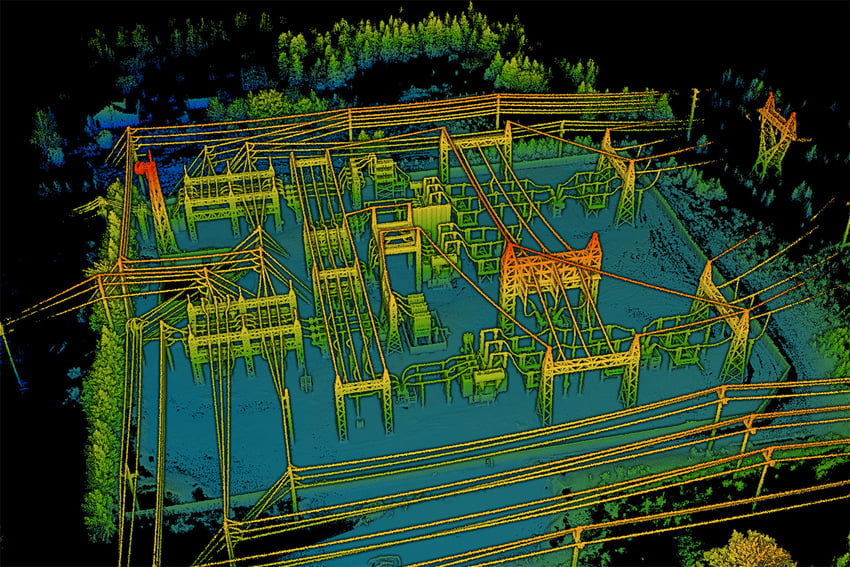
In the utility sector, these drones are used for inspecting power lines, pipelines, and other infrastructure. Traditionally, this task requires manual inspection or the use of manned aircraft, both of which can be risky, time-consuming, and expensive. Autonomous drones can safely and efficiently survey power lines, even in remote or difficult-to-access areas. They can detect issues such as damaged cables, worn insulators, or vegetation encroachment, which are potential hazards leading to power outages or wildfires.
The use of autonomous LiDAR drones in the utility and energy sector not only enhances the efficiency and safety of inspections and maintenance but also plays a crucial role in environmental monitoring, disaster response, and the overall management of energy resources. Their ability to gather detailed data in difficult-to-access areas and their versatility across various applications make them invaluable assets in this sector.

In the mining industry, autonomous LiDAR drones are revolutionizing the way underground and open-pit mines are surveyed and managed. They can safely map and model mine shafts, tunnels, working stopes, and open pits, providing valuable data for volume calculations, structural integrity assessments, and planning of mining operations. This technology significantly improves safety by reducing the need for human presence in potentially dangerous environments. You can read more in a whitepaper comparing an autonomous LiDAR drone to a traditional CMS method.

In construction, these drones can be used for site surveying and monitoring progress. They provide accurate and up-to-date 3D models of construction sites, which helps in efficient planning and detecting potential issues early. For infrastructure, they assist in the inspection and maintenance of bridges, buildings, and other structures, especially in hard-to-reach areas, ensuring structural integrity and safety.
Autonomous LiDAR drones are revolutionizing the field of construction and infrastructure inspection by offering a blend of safety, efficiency, and precision that was previously unattainable. These drones provide significant advantages over traditional surveying and inspection methods.

Autonomous LiDAR drones are increasingly becoming a vital asset in search and rescue (SAR) operations due to their ability to rapidly and safely survey large and often inaccessible areas. These drones offer a unique set of capabilities that can significantly enhance the efficiency and effectiveness of SAR missions. Here's how they are being utilized:

In the utility sector, these drones are used for inspecting power lines, pipelines, and other infrastructure. Traditionally, this task requires manual inspection or the use of manned aircraft, both of which can be risky, time-consuming, and expensive. Autonomous drones can safely and efficiently survey power lines, even in remote or difficult-to-access areas. They can detect issues such as damaged cables, worn insulators, or vegetation encroachment, which are potential hazards leading to power outages or wildfires.
The use of autonomous LiDAR drones in the utility and energy sector not only enhances the efficiency and safety of inspections and maintenance but also plays a crucial role in environmental monitoring, disaster response, and the overall management of energy resources. Their ability to gather detailed data in difficult-to-access areas and their versatility across various applications make them invaluable assets in this sector.
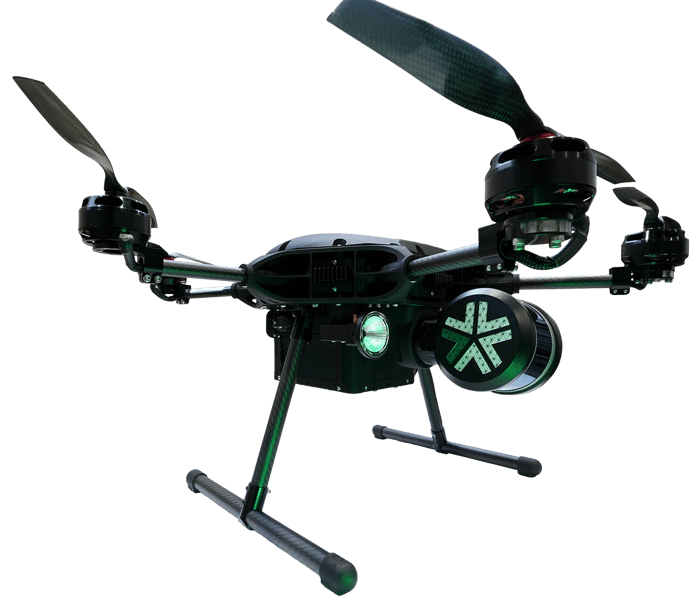
The ExynAero, our flagship product, is a marvel of aerial autonomy. Designed for challenging, GPS-denied environments, this drone leverages ExynAI to safely an intelligently navigate and map complex and dangerous environments for aerial survey.
The resulting point cloud is a survey-grade 3D model that can be imported into a variety of construction, geospatial, or other analytical software for inspection and further analysis.
Learn More about ExynAero EA6
The ExynPak is a handheld LiDAR-based SLAM platform that complements our aerial solutions. This portable payload unleashes the power of a SLAM capture system with you in the driver's seat of the compact backpak form factor for LiDAR surveying.
Quickly capture survey-grade 3D models for industrial inspection, construction BIM modeling, or geospatial analysis. It's perfect for on-the-ground reality capture, offering flexibility and precision in diverse settings.
Learn More about Exynpak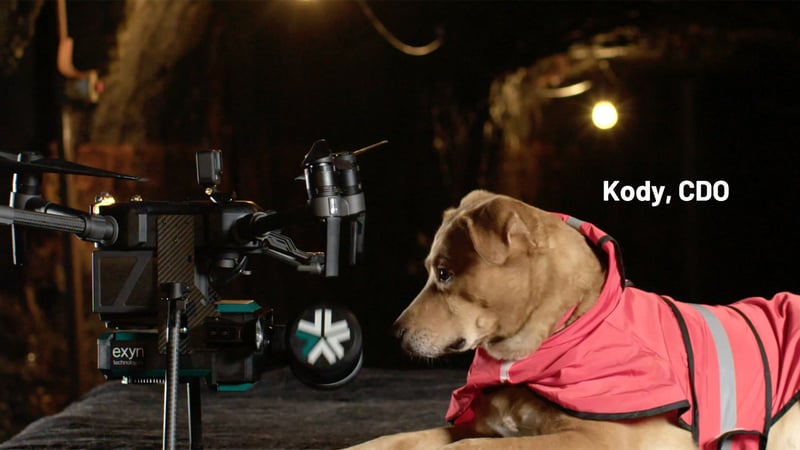
At Exyn Technologies, we're not just creating autonomous LiDAR drones; we're offering a ticket to the future of surveying and inspection. Our expertise in SLAM-powered laser scanners, LiDAR solutions, and aerial autonomy positions us at the forefront of this exciting field.
Whether you're tackling a complex construction project, exploring underground cavities, conducting industrial inspections, or engaging in geospatial aerial mapping, our autonomous LiDAR drones are designed to elevate your operations to new heights of efficiency, safety, and accuracy. Join us on this transformative journey, trust us we're just getting started.